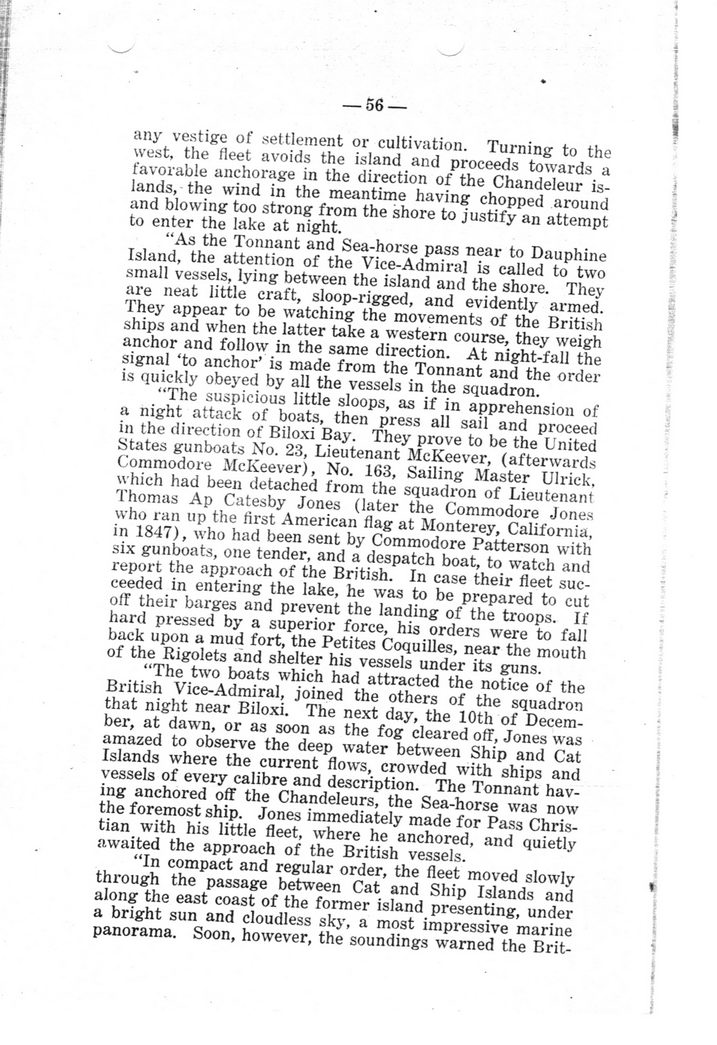This text was obtained via automated optical character recognition.
It has not been edited and may therefore contain several errors.
any vestige of settlement or cultivation. Turning to the west, the fleet avoids the island and proceeds towards a favorable anchorage in the direction of the Chandeleur islands, the wind in the meantime having chopped around and blowing too strong from the shore to justify an attempt to enter the lake at night. ?As the Tonnant and Sea-horse pass near to Dauphine Island, the attention of the Vice-Admiral is called to two small vessels, lying between the island and the shore. They are neat little craft, sloop-rigged, and evidently armed. They appear to be watching the movements of the British ships and when the latter take a western course, they weigh anchor and follow in the same direction. At night-fall the signal ?to anchor? is made from the Tonnant and the order is quickly obeyed by all the vessels in the squadron. ?The suspicious little sloops, as if in apprehension of a night attack of boats, then press all sail and proceed in the direction of Biloxi Bay. They prove to be the United States gunboats No. 23, Lieutenant McKeever, (afterwards Commodore McKeever), No. 163, Sailing Master Ulrick, which had been detached from the squadron of Lieutenant Thomas Ap Catesby Jones (later the Commodore Jones who ran up the first American flag at Monterey, California, in 1847), who had been sent by Commodore Patterson with six gunboats, one tender, and a despatch boat, to watch and report the approach of the British. In case their fleet succeeded in entering the lake, he was to be prepared to cut off their barges and prevent the landing of the troops. If hard pressed by a superior force, his orders were to fall back upon a mud fort, the Petites Coquilles, near the mouth of the Rigolets and shelter his vessels under its guns. ?The two boats which had attracted the notice of the British Vice-Admiral, joined the others of the squadron that night near Biloxi. The next day, the 10th of December, at dawn, or as soon as the fog cleared off, Jones was amazed to observe the deep water between Ship and Cat Islands where the current flows, crowded with ships and vessels of every calibre and description. The Tonnant having anchored off the Chandeleurs, the Sea-horse was now the foremost ship. Jones immediately made for Pass Christian with his little fleet, where he anchored, and quietly awaited the approach of the British vessels. ?In compact and regular order, the fleet moved slowly through the passage between Cat and Ship Islands and along the east coast of the former island presenting, under a bright sun and cloudless sky, a most impressive marine panorama. Soon, however, the soundings warned the Brit-

Battle of 1814 Battle-of-the-Gun-Boats-Chapter-5-P56